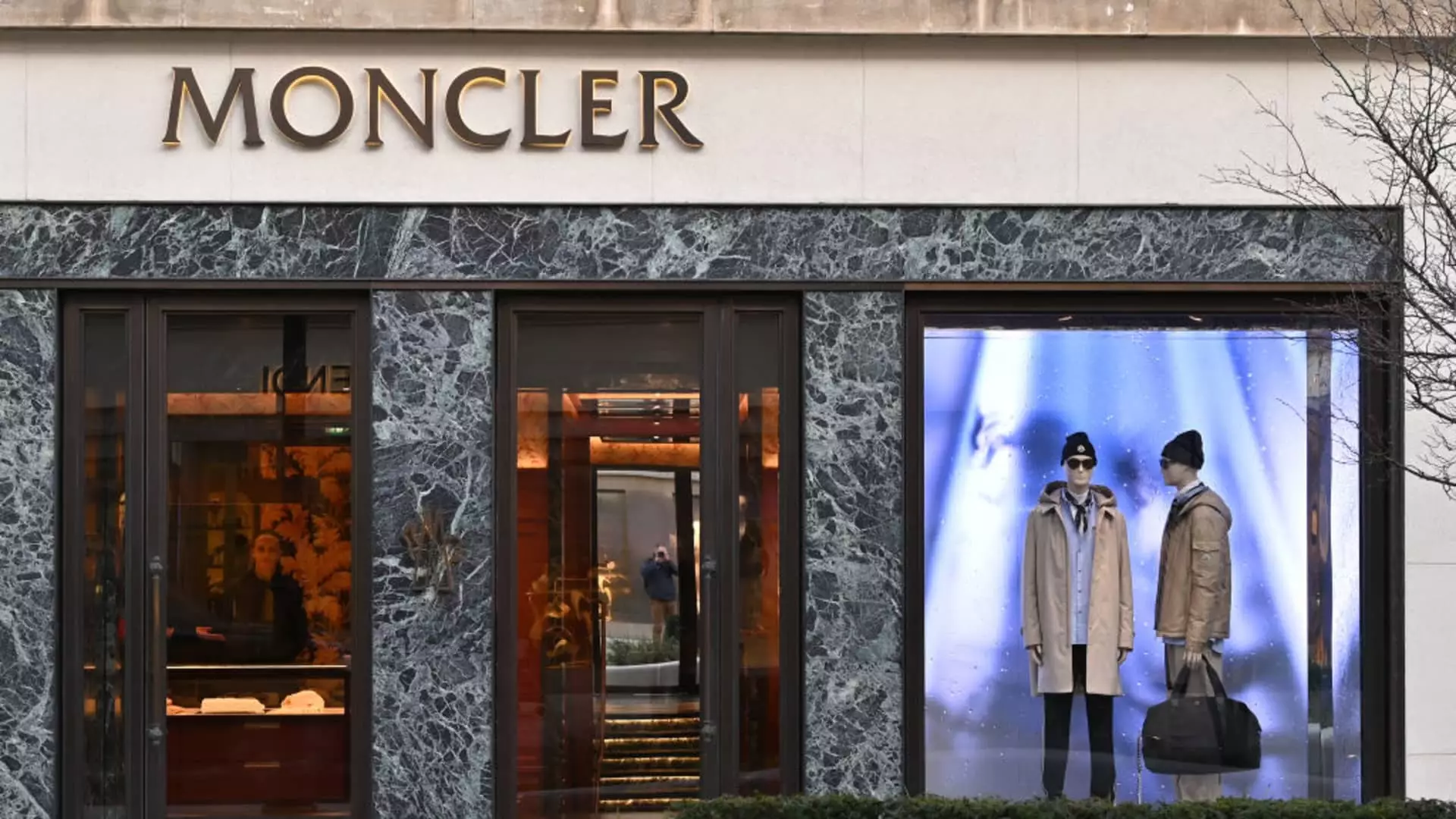Moncler’s recent financial disclosures reveal a company teetering on the edge of instability, largely due to external economic pressures. While the luxury retailer attempts to justify modest price increases as a shield against U.S. tariffs, these measures are hardly a sustainable solution for a brand that thrives on exclusivity and customer loyalty. Increasing prices by “mid-single-digit” percentages might momentarily cushion the impact of tariffs, but it risks alienating a core demographic increasingly sensitive to affordability. The company’s hesitancy to finalize its pricing strategy for Winter 2026 signals deeper uncertainty about the economic landscape and consumer sentiment, which could undermine its long-term growth.
Moncler’s cautious approach reflects a strategic fragility rather than resilience. The postponement of store openings planned for 2026 underlines a fundamental vulnerability—if macroeconomic conditions worsen, the luxury house might retreat further, stifling expansion just when market potential was supposed to be ripe for growth. Such hesitance demonstrates a reactive rather than proactive stance, suggesting that Moncler is unprepared for the storm clouds gathering over global markets.
Economic headwinds threaten the luxury market’s stability
The company’s performance in the second quarter underscores broader economic concerns. A mere 1% dip in revenues at constant exchange rates, with sales falling short of analyst expectations, is indicative of a fragile consumer base. Noteworthy is the subdued performance across key markets such as Europe and Asia, where tourist spending—the lifeblood of luxury brands—continues to ebb. Weak tourist flows in Europe and a rocky yen rebalancing in Japan expose the vulnerability of Moncler’s revenue model, heavily reliant on international visitors. The company’s remark that it cannot definitively link increased U.S. sales to pre-tariff buying sprees further emphasizes its uncertainty about underlying demand dynamics.
This situation reveals a critical flaw: luxury brands like Moncler are increasingly exposed to external shocks, whether geopolitical or macroeconomic. Their dependence on affluent tourists and international markets makes them susceptible to fluctuations beyond their control. The marginal U.S. sales increase, unclear whether driven by panic buying or genuine demand, showcases how fragile this recovery attempt is—one that could easily be reversed if economic conditions worsen.
Price hikes and store expansion: a risky balancing act
Moncler’s strategy to raise prices cautiously acknowledges an internal dilemma—how to maintain margins without losing consumer loyalty. However, escalating prices in a climate of economic uncertainty is akin to walking a tightrope; the risk of losing clientele eager to seek better deals elsewhere is palpable. The decision to implement conservative pricing increases indicates a recognition that the market’s tolerance for higher costs is diminishing, especially as prestige alone no longer ensures customer retention.
Furthermore, the tentative posture towards opening new stores signals a company that is unsure if the current expansion plan is sustainable. Postponing or reducing store openings could turn out to be a strategic misstep in the long run if the luxury market rebounds quickly; but alternatively, pressing ahead without sufficient demand risks overextending the brand in a downturn. Such indecision reveals a broader struggle within Moncler to adapt proactively, instead oscillating between expansion and contraction based on uncertain macro conditions.
The broader implications for the luxury industry
Moncler’s predicament is a mirror of a larger trend within the luxury sector—exposure to geopolitical tension, currency volatility, and shifting consumer preferences. Luxury brands are no longer insulated from macroeconomic fluctuations; instead, they face intensified scrutiny over pricing strategies and market presence. The reliance on global tourism is precarious, as crises and political instability threaten to limit the very customer base that sustains these brands.
In essence, Moncler’s current approach—small price adjustments and deferment of expansion—may be indicative of a cautious, yet ultimately shortsighted, mindset. The market demands bold, innovative strategies that could counteract economic headwinds, not mere reactionary measures. As luxury brands find themselves increasingly vulnerable in a world marked by uncertainty, adaptability and confidence in strategic vision will determine their resilience rather than incremental cost shifts or delayed growth plans.


Leave a Reply